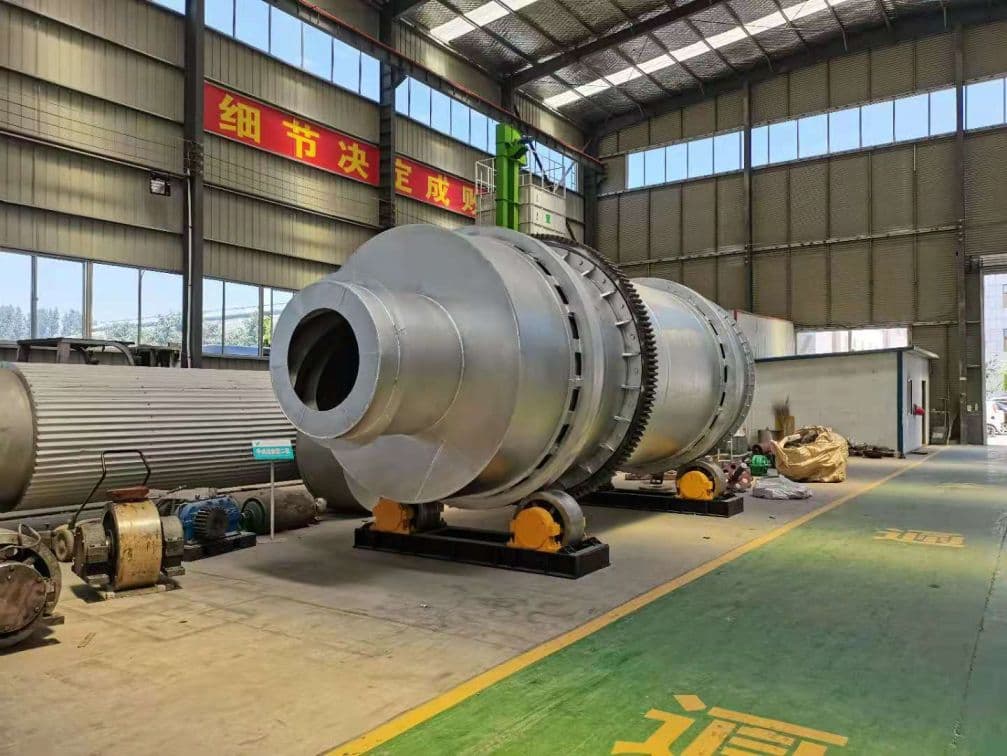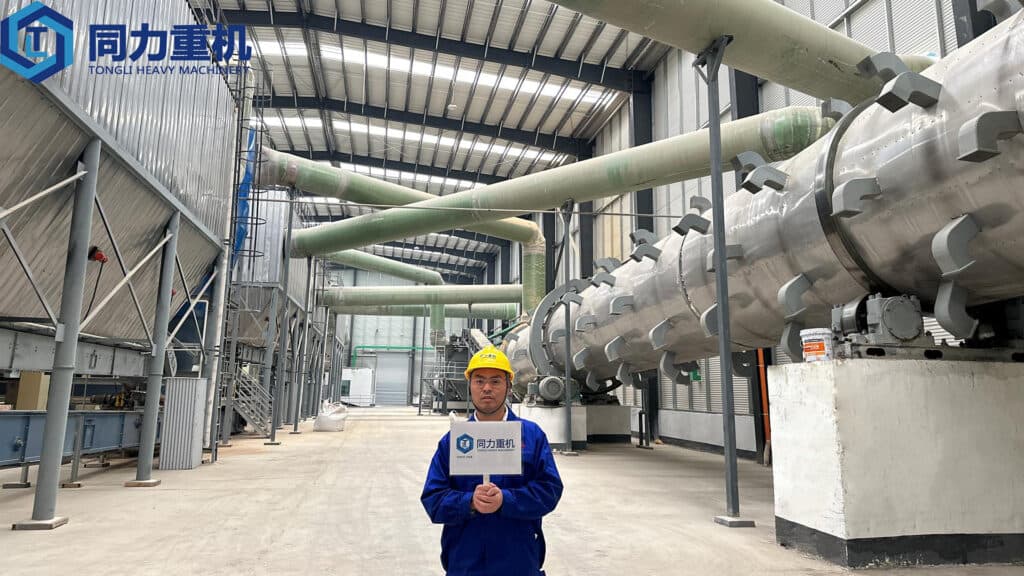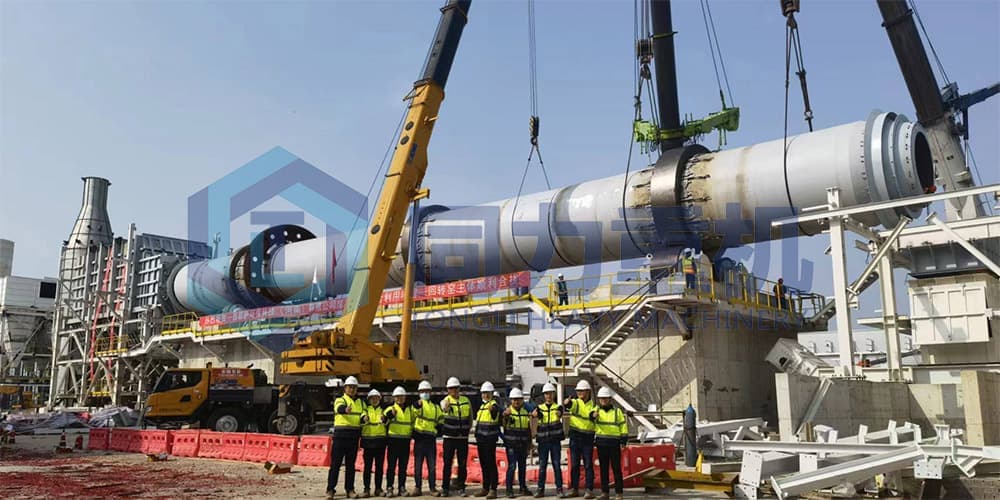What Causes Rotary Dryer Misalignment?
Rotary drum dryers are critical components in many industrial processes, tasked with efficiently removing moisture from various materials. The smooth and consistent operation of these machines is paramount to production efficiency and product quality. However, misalignment of the rotary dryer can significantly impact its performance, leading to reduced efficiency, increased maintenance costs, and even premature equipment failure.
This comprehensive guide delves into the root causes of rotary dryer misalignment, its detrimental effects, and effective prevention strategies. By understanding these factors, operators and maintenance personnel can implement measures to optimize dryer performance and extend its lifespan.

Causes of Rotary Dryer Misalignment
Misalignment in a rotary dryer can stem from various factors, each contributing to the overall deviation of the drum from its intended position.
Foundation and Base Issues
- Improper installation: Incorrectly leveled or secured foundations can lead to uneven weight distribution, causing the dryer to tilt or shift over time.
- Soil settlement: Uneven soil compaction or subsidence can induce stress on the dryer base, resulting in misalignment.
- Vibrational forces: Continuous operation generates vibrations that can gradually affect the foundation’s stability.
- Thermal expansion: Temperature fluctuations can cause expansion and contraction of the foundation, potentially leading to misalignment.
Drum Component Wear
Tire, wheel, and pinion wear: Uneven wear of these components can disrupt the smooth rotation of the drum, causing it to deviate from its alignment.
Thrust roller wear: Excessive wear on thrust rollers can impact the drum’s axial position, leading to misalignment.
Girth gear wear: Irregular wear of the girth gear can affect the drum’s rotational alignment.
Operational Factors
Overloading: Exceeding the dryer’s capacity can induce excessive stress on components, accelerating wear and misalignment.
Material characteristics: Abrasive or sticky materials can contribute to premature wear of components, indirectly affecting alignment.
Improper maintenance: Neglecting regular inspections, lubrication, and component replacement can hasten the onset of misalignment.
Environmental Factors
- Temperature fluctuations: Extreme temperature changes can cause thermal expansion and contraction of the dryer components, affecting alignment.
- Vibration from external sources: Nearby equipment or machinery can transmit vibrations to the dryer, inducing misalignment.
Signs of Rotary Dryer Misalignment
Recognizing the early signs of misalignment is crucial for preventing further damage and costly repairs. Common indicators include:
- Excessive wear: Rapid deterioration of tires, wheels, pinions, girth gears, and thrust rollers.
- Abnormal noise: Increased vibration, chatter, or grinding sounds emanating from the dryer.
- Material handling issues: Difficulty in feeding or discharging material due to uneven drum rotation.
- Energy consumption: Increased power consumption as the dryer struggles to operate efficiently.
- Reduced drying efficiency: Decreased drying capacity or inconsistent product quality.
- Seal leakage: Misalignment can cause seals to wear prematurely, leading to material leakage.
Consequences of Misalignment
Ignoring misalignment can have severe repercussions for the rotary dryer and the overall production process:
- Premature component failure: Accelerated wear of tires, wheels, pinions, girth gears, and thrust rollers, resulting in costly replacements.
- Reduced dryer lifespan: Overall reduction in the dryer’s service life due to excessive stress and component damage.
- Increased maintenance costs: Frequent repairs and component replacements due to accelerated wear.
- Production downtime: Planned and unplanned shutdowns for maintenance and repairs.
- Product quality issues: Inconsistent drying results and potential contamination of the product.
- Energy inefficiency: Increased energy consumption due to increased friction and reduced efficiency.

Preventing and Correcting Misalignment
To minimize the risk of misalignment and optimize dryer performance, several preventive measures can be implemented:
Proper Installation
Ensure a solid and level foundation for the dryer.
Use vibration isolators to reduce the impact of ground vibrations.
Conduct thorough alignment checks during installation.
Regular Inspection and Maintenance
Implement a routine inspection program to monitor component wear and alignment.
Adhere to recommended lubrication schedules.
Replace worn components promptly.
Balance the dryer load to prevent overloading.
Alignment Checks and Corrections
Utilize laser alignment tools for precise measurements.
Train operators and maintenance personnel on alignment procedures.
Correct misalignment promptly to prevent further damage.
Material Handling Optimization
- Ensure proper material feed and discharge to minimize stress on the dryer.
- Monitor material characteristics and adjust operating parameters accordingly.
Environmental Considerations
- Protect the dryer from extreme temperature fluctuations.
- Isolate the dryer from external vibration sources.
Advanced Alignment Techniques
In addition to traditional alignment methods, advanced techniques can be employed for enhanced accuracy and efficiency:
- Laser alignment: Provides precise measurements for quick and accurate alignment.
- Vibration analysis: Identifies potential misalignment issues based on vibration patterns.
- Finite element analysis (FEA): Simulates dryer behavior under different conditions to optimize design and prevent misalignment.

Conclusion
Rotary dryer misalignment is a critical issue that can significantly impact equipment performance, production efficiency, and product quality. By understanding the causes, signs, and consequences of misalignment, operators and maintenance personnel can implement effective prevention and correction strategies. Regular inspections, proper maintenance, and the use of advanced alignment techniques are essential for ensuring optimal dryer performance and extending its lifespan.
If you need rotary drying equipment or technical support, please feel free to contact TONGLI, we will be happy to provide you with professional services and solutions.

